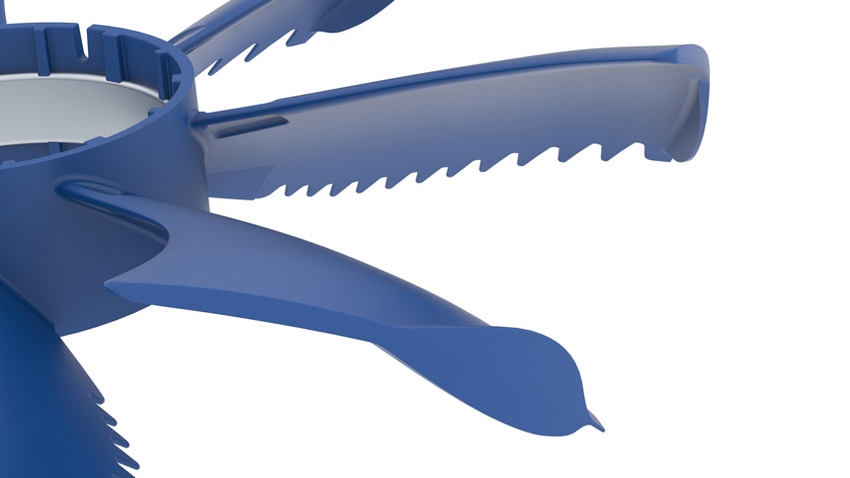Ziehl-Abegg (Kuenzelsau, Germany), a manufacturer of fans for ventilation and air conditioning applications and the company behind the "bionic bio-fan," has partnered with Akro-Plastic GmbH (Niederzissen, Germany) to develop a polyamide 6.10–based Akromid S compound to meet the specific requirements of the blades of the bionic fan.
August 30, 2014

Ziehl-Abegg (Kuenzelsau, Germany), a manufacturer of fans for ventilation and air conditioning applications and the company behind the "bionic bio-fan," has partnered with Akro-Plastic GmbH (Niederzissen, Germany) to develop a polyamide 6.10–based Akromid S compound to meet the specific requirements of the blades of the bionic fan.
 Bionics, a branch of engineering in which design solutions are developed based on the biological methods and systems found in nature, has spawned all manner of revolutionary improvements in traditional technical systems. Well-known examples include the winglets found on modern planes, which are modeled on the curled wing tips seen in eagles; the lotus effect, which has yielded self-cleaning surfaces; and Velcro, inspired by burrs from the burdock plant. At Ziehl-Abegg, engineers looked to the owl to solve the problem of noisy fans.
Bionics, a branch of engineering in which design solutions are developed based on the biological methods and systems found in nature, has spawned all manner of revolutionary improvements in traditional technical systems. Well-known examples include the winglets found on modern planes, which are modeled on the curled wing tips seen in eagles; the lotus effect, which has yielded self-cleaning surfaces; and Velcro, inspired by burrs from the burdock plant. At Ziehl-Abegg, engineers looked to the owl to solve the problem of noisy fans.
In the course of their evolution, owls developed serrated feathers on their wings and downy feathers on their legs that minimize aerodynamic noise, giving them their silent flight. Observing this, Ziehl-Abegg decided to apply the same principle to its newest generation of axial fans. The back edge of the fan blade is fringed, and a winglet-like feature was added to further reduce resistance of the fan blade. The new blade geometry proved, indeed, to lead to a substantial reduction in both energy consumption and the amount of noise produced by the fan.
The fan blade contains more than 60% renewable sebacic acid, which is extracted from the castor oil plant, a non-food crop cultivated on low-nutrient ground that is, therefore, not in competition with food production. Biobased PA 6.10 is not biodegradable, as this is not a desired property in engineering plastics applications, which require a long service life of the end product and high material resistance, says Akro-Plastic. "This cannot be fulfilled by a degradable plastic."
Compared to standard polyamides, such as PA 6 and PA 6.6, PA 6.10 offers a number of advantages, including up to 6% lower component weight, less water absorption, better chemical resistance, greater dimensional consistency, and a reduced carbon footprint due to the use of a plant-based raw material.
The mechanical properties of Akromid S, reinforced with 30% glass fiber, ensure safe operation of the fan even at higher speeds. The material boasts excellent surface quality due to the process technology used in the manufacturing method. The material is produced on a twin-screw extruder without a kneading block to ensure careful dispersion. This gentle compounding method reduces fiber length degradation of the incorporated glass fibers, allowing greater values to be achieved in tensile strength and impact strength.
The noise-reducing bionic fans will soon be used in refrigeration technology (refrigeration chain to the supermarket), heaters and heat pumps, and for electronics cooling (computing centers and switchgear-cabinet and inverter cooling).
About the Author(s)
You May Also Like


